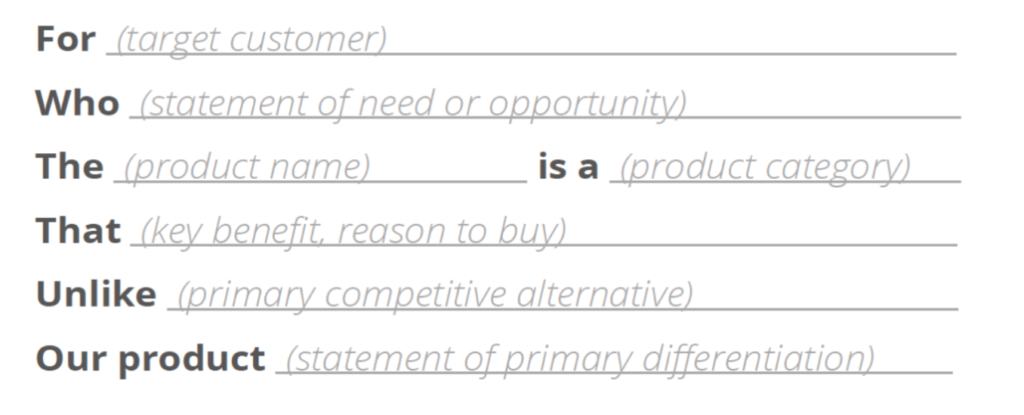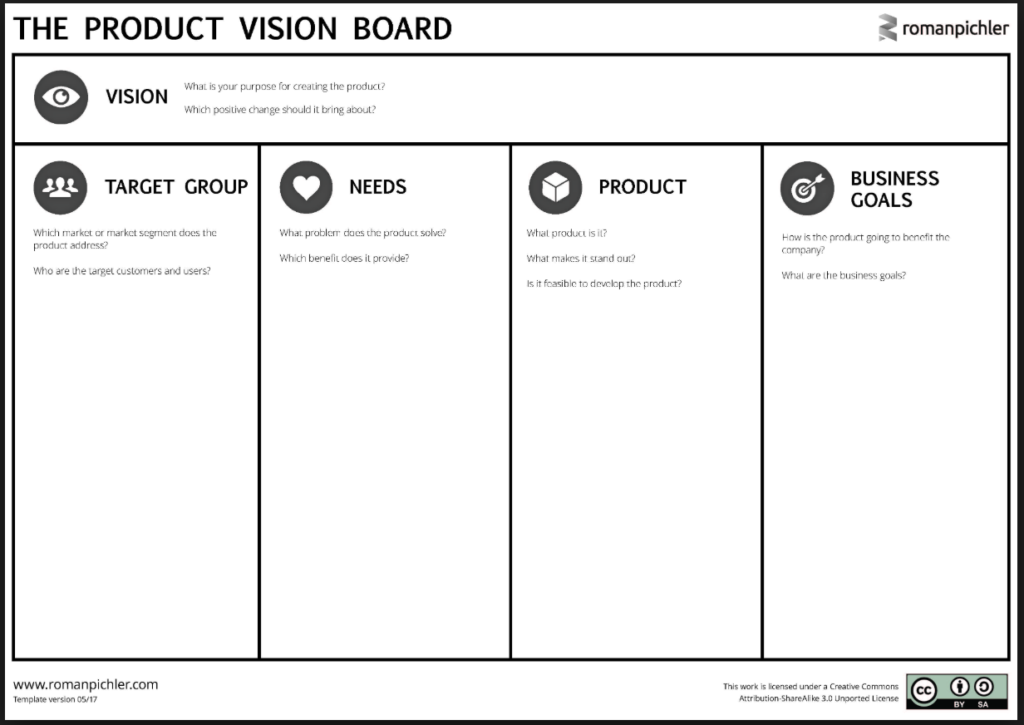| Product Vision |
Before planning or taking any action, it is important to first have a bird’s eye view of what your general aims should be.
Sit down, either alone, or with your vision-minded partners, and hash things out using the product vision table below (or something similar that works optimally for your team).
Be tactile – use a white board (the bigger the better), and/or physical sheets of paper or large note cards or post-it notes and a product vision board. Some teams, especially those who must work remotely, will use dedicated electronic tools to approximate this process.
Go over the essentials of your product.
Essential Questions
Note: use a product vision board, or something like it, to go over these questions and to record your hashed-out plan.
- What is our minimum viable product – the main problem that our idea will solve?
- Are we certain that this problem has not already been solved by an existing tool or product?
- Is it partially solved? If so, would it be more strategic to use what exists and add to it, or to start completely over with a competing product?
- What components of our idea are absolutely essential to solving the main problem?
- What aspects of our initial plan are “great ideas” (and probably worth implementing at some point) but not exactly essential?
- Are we certain that solving this problem will have “business value,” i.e., generate sustainable revenue?
- Who will use this product or plan?
- Are there different user types who will use it in different ways?
- If we will rely on users for your revenue, how much would they probably be willing/able to pay, and how many will we need to get (and keep) to be sustainable?
The Product Vision is not
- a set-in-stone plan
- a wish list
- a collection of requirements previously set forth by various leaders in an organization
- a set of steps tied to a specific finish / release date
The Product Vision is
- an organized brainstorm
- a chance to put all good ideas on the table and refine them based on practical needs and strategies
- a chance to get collaboration and buy-in from all relevant stake holders
- a chance to set out objectives with confidence that they are strategic and that it’s normal for some of them to change
With these answered, write up a Vision Statement that incorporates your answers.
Here is a classic version:
Remember: keep it simple. Some of your ideas won’t be as good as you think they are. Expect and prepare for changes. Take a fluid approach. Only hesitate to change one: “what is the main problem that our idea will solve.”
The sample below is from Roman Pichler, a well-known Agile author. This Product Vision board is a good starting-point. Adapt it to your own team’s preferences and your own project’s needs.
https://www.romanpichler.com/tools/vision-board/
Tips for Improvement
- Be(come) the owner of the Product vision
- Share your Product vision, often
- Develop your vision iteratively and incrementally
- Focus on value for customers and users, not on technology
Taken from Ten Tips for Product Owners On The Product Vision

